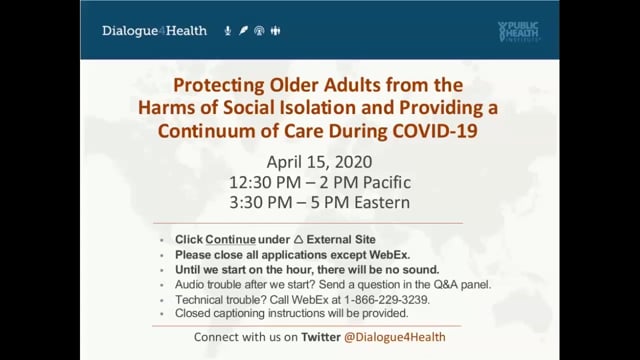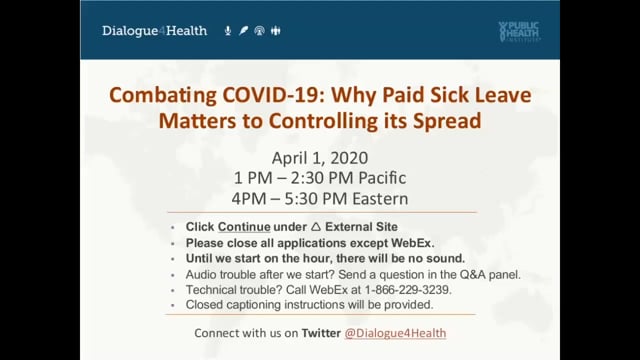Funding for public health preparedness and response programs lost ground in FY 2020 and over the past decade.
(Washington, DC – April 16, 2020) – Chronic underfunding of the nation’s public health and emergency preparedness systems has made the nation vulnerable to health security risks, including the novel coronavirus pandemic, according to a new report released today by Trust for America’s Health.
The report, The Impact of Chronic Underfunding on America’s Public Health System: Trends, Risks, and Recommendations, 2020, examines federal, state, and local public health funding trends and recommends investments and policy actions to build a stronger system, prioritize prevention, and effectively address twenty-first-century health risks.
“COVID-19 has shined a harsh spotlight on the country’s lack of preparedness for dealing with threats to Americans’ well-being,” said John Auerbach, President and CEO of Trust for America’s Health. “Years of cutting funding for public health and emergency preparedness programs has left the nation with a smaller-than-necessary public health workforce, limited testing capacity, an insufficient national stockpile, and archaic disease tracking systems – in summary, twentieth-century tools for dealing with twenty-first-century challenges.”
Mixed Picture for CDC FY 2020 Funding
The U.S. Centers for Disease Control and Prevention (CDC) is the nation’s leading public health agency. The CDC’s overall budget for FY 2020 is $7.92 billion – a $645 million increase, 9 percent over FY 2019 CDC funding, 7 percent in inflation-adjusted dollars. The largest FY 2020 increase was a onetime investment in buildings and facilities (+$225 million). Other increases included funding for the Ending HIV initiative (+$140 million) and small increases for suicide and chronic disease prevention programs.
Emergency Preparedness Funding Down This Year and For Over a Decade
Funding for CDC’s public health preparedness and response programs decreased between the FY 2019 and FY 2020 budgets – down from $858 million in FY 2019 to $850 million in FY 2020. CDC’s program funding for emergency preparedness in FY 2020 ($7.92 billion) is less than it was in FY 2011 ($7.99 billion in FY 2020 dollars), after adjusting for inflation.
Funding for state and local public health emergency preparedness and response programs has also been reduced, by approximately one-third since 2003. And, of critical concern now, funding for the Hospital Preparedness Program, the only federal source of funding to help the healthcare delivery system prepare for and respond to emergencies, has been cut by half since 2003.
Federal action to enact three supplemental funding packages to support the COVID-19 pandemic response was critical. But they are short-term adjustments that do not strengthen the core, long-term capacity of the public health system, according to the report’s authors. Sustained annual funding increases are needed to ensure that our health security systems and public health infrastructure are up to the task of protecting all communities.
The nation’s habitual neglect of public health, except during emergencies, is a longstanding problem. “Emergencies that threaten Americans’ health and well-being are becoming more frequent and more severe. These include wildfires and flooding, the opioid crisis, the increase in obesity and chronic illness, and this year a measles outbreak, serious lung injuries due to vaping, and the worst pandemic in a century. We must begin making year-in and year-out investments in public health,” Auerbach said.
In addition to supporting federal activities, federal monies are also the primary source of funding for most state and local public health programs. During FY 2018, 55 percent of states’ public health expenditures, on average, were funded from federal sources. Therefore, federal spending cuts have a serious trickle-down effect on state and local programs. Between FY 2016 and FY 2018, state expenditures of federal monies for public health activities decreased from $16.3 billion to $12.8 billion. On top of federal cuts, some states have also reduced public health funding. More than 20 percent of states (eleven) cut their public health funding between 2018 and 2019.
These funding cuts have led to significant workforce reductions in state and local public health departments. In 2017, 51 percent of large local public health departments reported job losses. Some of the positions lost were frontline public health staff who would have been mobilized to combat the COVID-19 pandemic.
The report includes 28 policy recommendations to improve the country’s emergency preparedness in four priority areas:
- increased funding to strengthen the public health infrastructure and workforce, including modernizing data systems and surveillance capacities.
- improving emergency preparedness, including preparation for weather-related events and infectious disease outbreaks.
- safeguarding and improving Americans’ health by investing in chronic disease prevention and the prevention of substance misuse and suicide.
- addressing the social determinants of health and advancing health equity.
The report also endorses the call by more than 100 public health organizations for Congress to increase CDC’s budget by 22 percent by FY 2022.
# # #
Trust for America’s Health is a nonprofit, nonpartisan organization that promotes optimal health for every person and community and makes the prevention of illness and injury a national priority. Twitter: @healthyamerica1

